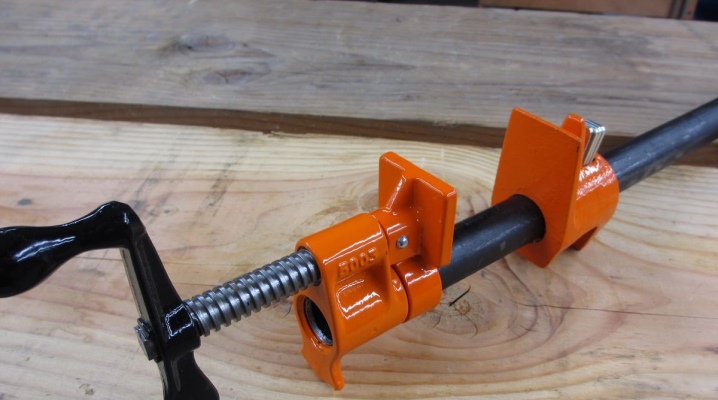All About Pipe Clamps

Often, when repairing pipes in residential public buildings, it is necessary to fix the ends of two sections of the repair object. Otherwise, it will be very difficult to dock them at the same level and achieve static. With a pipe clamp, a reliable fixation occurs without displacement and twisting. This helps to optimize the workflow and improve the quality of the finished product.

Peculiarities
The design of the pipe clamp differs in that it is intended for parts only of cylindrical shape. In fact, this is a vice that grips the part inserted into them and, due to the pressure, firmly fixes it. Accordingly, such an auxiliary tool would be more suitable for pipes made of metal or other hard material that does not crack under pressure.

The pipe clamp usually consists of two separate parts - holders with round through holes. Above these holes are the pressure surfaces. They hold the parts that are inserted into the pipe clamp.
To process one part in its middle, the pipe is dragged through both holes and clamped, after which the necessary surface treatment is performed or the part is cut.

Model overview
A feature - and in some cases even a disadvantage - of pipe clamps is that typical models are designed for only one pipe diameter - 1/2 or 3/4 inch. There are also models with legs, but due to their lower stability, they are rarely used.

Separately, you can highlight a tool that is designed for one pipe. Such a clamp has only one hole in which it is placed. The base of such a vice is stationary and represents a bed, and the part is clamped by mechanisms with screws. This model has a serious advantage over the standard ones - it can grip pipes of any diameter from 10 to 89 mm.

In the same time the store version of a single clamp most often does not imply a wide extension, therefore they are used for the very ends of the pipes... But you can make a tool of any length yourself. To do this, you need a threaded steel pipe, a clamp with a sponge. It is best to choose black pipes for this, since they are protected from corrosion by galvanic coating, are quite cheap and do not stain materials after contact with glue or other substances. You can buy such a pipe at any hardware store.

How to choose?
First of all, you need to decide for what tasks you need a tubular clamp. Only standard double models are suitable for welding. For trimming or creating threads, you can take a single one. For products with a narrow diameter, ordinary carpentry can also be used.
Some clamps come with sponges or you can add them yourself. In this version, they are often used for gluing large-area panels, from which countertops, doors, etc. are made.
One jaw is firmly fixed, and the other moves to the required size and clamps, fixing with a stopper.


Reliable and comfortable vise allows you to do high-quality work due to the fact that it frees both hands and fixes the parts better than even a very good craftsman can do on his own. That's why be sure to pay attention to symmetry if a pair pipe clamp is selected... An asymmetrical and curved tool can give poor joining when welded.

Pipe clamps are presented in the video below.













The comment was sent successfully.